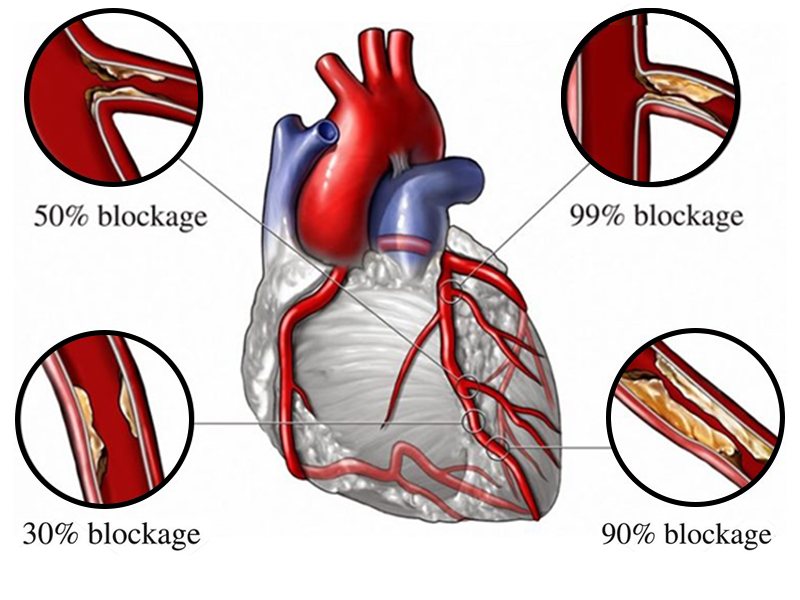


What is coronary angiography?
Our heart pumps blood (and oxygen) to all the body organs. Heart muscle also needs oxygen for the function of pumping, which is supplied to the heart by Coronary arteries. Coronary angiography is a test that uses a special dye and special x-rays to show the insides of your coronary arteries. The facility where such a test is possible with a special x-ray machine is called ‘Cath lab’ (catheterization laboratory).
In this procedure, a thin, hollow tube called a catheter is inserted into a blood vessel from your arm or groin. The tube is then advanced and threaded into your coronary arteries. Then dye is injected and x-ray pictures are taken while the dye is flowing through the coronary arteries. This helps doctors see blockages in the arteries. When the angiogram is over, the catheter is removed and a pressure bandage is applied at the puncture site.
BEFORE AND AFTER CORONARY ANGIOGRAPHY
Prior to the angiography, you may need some blood tests and ECG (cardiogram). You may be asked to stop eating and drinking for few hours before the test. You may be asked to shave both groins and arms before the test. If you are pregnant, you need to inform the doctor prior to the test.
Before the test starts, you can be given a mild sedative, which helps you to be relaxed. You’re fully awake during the procedure, and it causes little or no pain. It takes only a few seconds to finish this test. Generally, the risk of serious complications is very low. You can be discharged on the same day of the procedure. You should drink plenty of fluids to help flush the dye from your body.
Avoid strenuous activities and heavy lifting for several days. Your puncture site is likely to remain tender for a while. There can skin discolouration and a small swelling for few days at the puncture site.
WHEN TO DO CORONARY ANGIOGRAPHY?
Coronary angiography is considered a ‘gold-standard’ test to diagnose blocks in the artery of your heart. When cholesterol gets deposited in the wall of your coronary arteries (called plaque), it causes narrowing of the lumen of arteries; which is called ‘Coronary artery disease (CAD)’. Narrowing of the artery causes a reduction of oxygen-rich blood supply to your heart..
This can cause chest pain or discomfort called ‘Angina’. Sometimes a blood clot develops on the surface of plaque and it can partially or completely block blood flow through the coronary artery. This can compromise the viability of the heart muscle and in a few minutes, your heart muscle stops working. This can cause the most severe form of heart attack called ‘Myocardial infarction (STEMI)’. Coronary angiography is a very useful test to diagnose the above conditions.